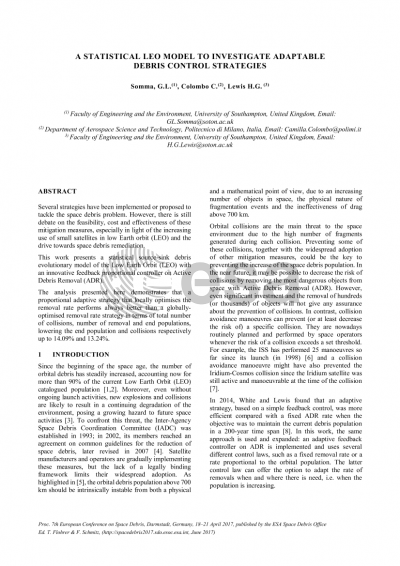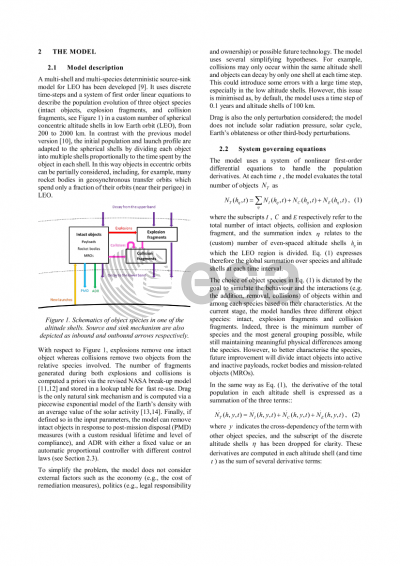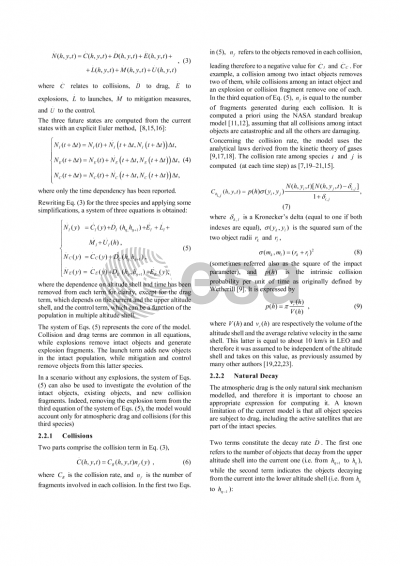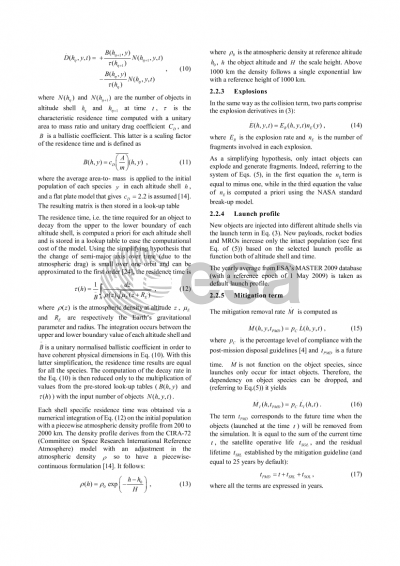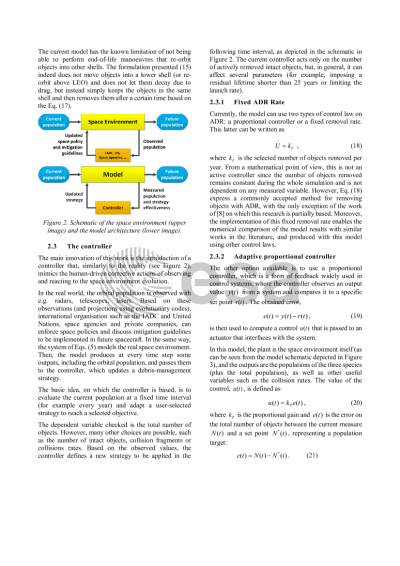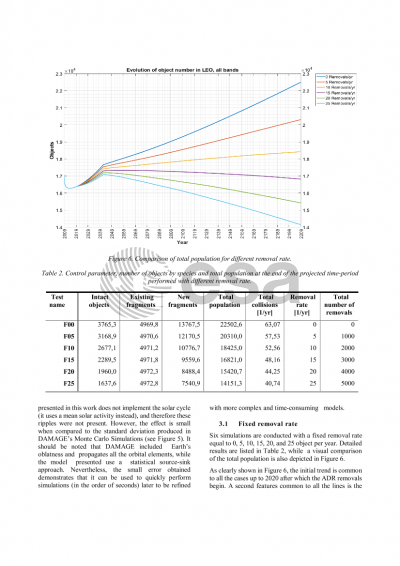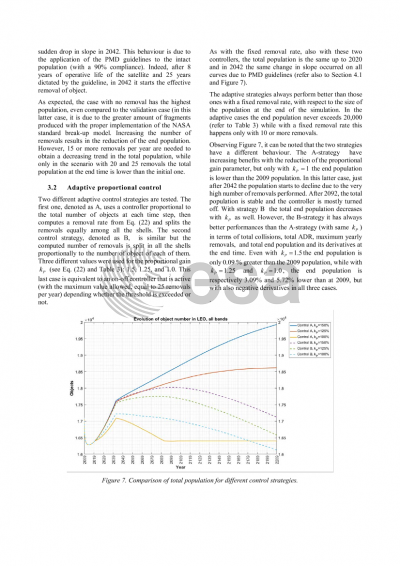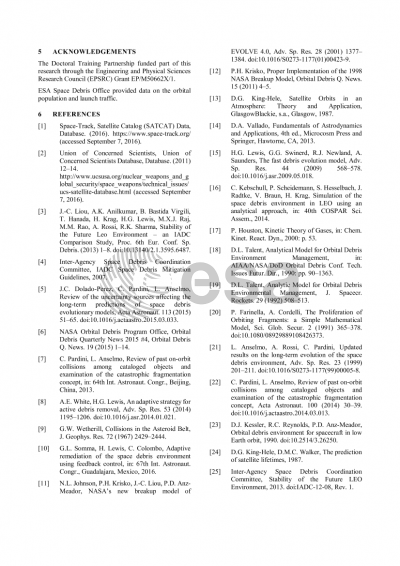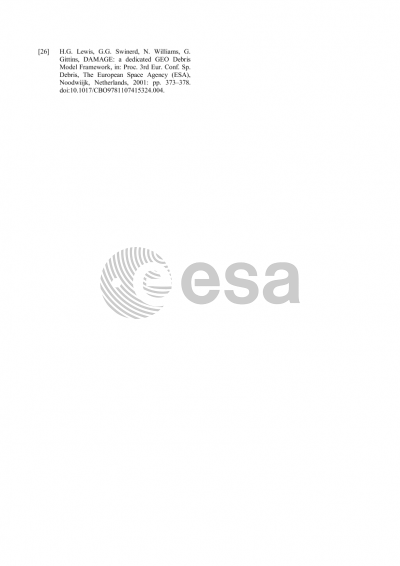Document details

Abstract
Satellite-based services pervade everyday life and generate a worldwide economy worth more than $320 billion per year through science, remote sensing and telecommunication. Within this context, the abundance and continuous growth of space debris (accounting now for more than 90% of the current LEO catalogued population) pose an increasing threat to present and future space activities. Indeed, due to its high kinetic energy, even an object smaller than 1 centimetre can damage, disrupt, or even destroy a satellite, resulting in loss of services and potential costs of hundreds of millions of dollars.
Several strategies have been realised or proposed to tackle the space debris problem, such as prevention (MROs suppression, rocket bodies reusability), mitigation (passivation, design for demise), remediation (ADR) and servicing (refuel and repair) measures. However, there is still debate on the adoption and effectiveness of these measures.
The objective of this work is then to gain a better understanding of the effects and limitations of different debris control strategies. A novelty of this work is to look for specific rules to be applied based on the object type (integer, fragment), physical and orbital characteristics. In this way, this research has then the opportunity to discover new, more efficient ways to combine both existing and proposed technologies (e.g. ADR).
This work presents a statistical source-sink debris evolutionary model of the Low Earth Orbit (LEO) with a proportional control on Active Debris Removal (ADR). The model is based on a set of first order differential equations, which describe the injection and removal rates in several altitude bands within the LEO. Explosions and collisions generate fragments via the standard NASA breakup model, while Post Mission Disposal (PMD) and ADR are the removing mechanisms. Drag, the only natural sink mechanism, is computed through a piecewise exponential model of the atmospheric density, assuming that all objects have circular orbits. Another innovation in this work is the use of a feedback controller on ADR, where the number of removals is proportional to orbital population. The proposed control mimics the human-driven corrective actions arising from the review and adaptation of debris mitigation policies.
The model is validated, and then preliminary results are reported, together with sensitivity studies on some fundamental aspect of the modelling process, such as the number of altitude bands and the integration time step used in the Eulerian integrator. It has been found that this latter has always to be set to less than one year to avoid numerical instabilities. A good trade-off between computational time and result accuracy was found to be 0.6 years. Results also demonstrate the benefits of having a high post-mission disposal compliance, with a mean reduction in the LEO population (after 100 years) of 8.56% for every 30% rise in the compliance level.
Preview
